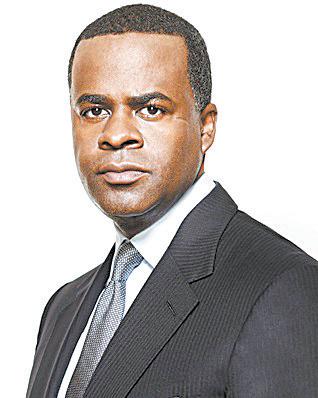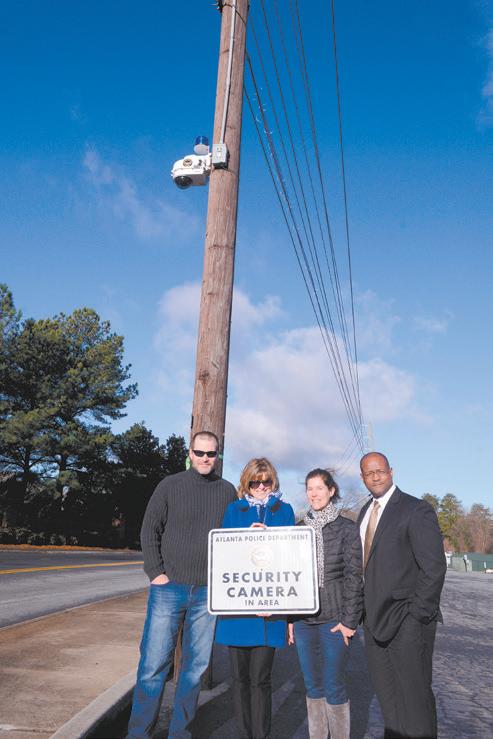
3 minute read
ATLANTA MEMORIAL PARK’S SEWAGE SPILL RAISES CONCERN

By Collin Kelley



Following a meeting with members of the Atlanta Memorial Park Conservancy leadership, neighborhood leaders and Councilmember Yolanda Adrean on Feb. 22, Mayor Kasim Reed announced an aggressive approach to solving the flooding problems that have plagued the park and the Peachtree Creek basin.
Reed said he, senior members of the administration and expert engineers will meet with conservancy members and other neighborhood leaders at key problem areas inside Memorial Park and along Peachtree Creek.
Following the site visit, the engineers will develop a list of recommended solutions for consideration by the mayor, the city council and the conservancy leadership team.
“The health and safety of Atlanta residents is this administration’s top priority,” Reed said.

Reed has already directed the city’s Department of Watershed Management to accelerate the $30 million Peachtree Trunk Stabilization Capital Improvement Project that is in the procurement pipeline right now.

In 2014, the city completed the $45 million Peachtree Creek Capacity Relief Storage Tank and Pump Station that is designed to alleviate sewer overflows during heavy rain in the Peachtree Creek basin. The tank just west of Cheshire Bridge

Road and bordering the CSX rail right-ofway stores up to 10 million gallons of water and is equipped with a state-of-the-art selfcleaning and odor control system.

Chattahoochee Riverkeepr Jason Ulseth said he believes there is confusion about what is happening at Atlanta Memorial Park, and offered explanations and solutions to fixing the problem.
Ulseth said Atlanta utilizes two types of sewer systems: combined and separated. In a combined system, rainfall and sewage are intentionally combined for treatment, while a separated sanitary system is a pipe network that only carries waste. He said the spills in Atlanta Memorial Park are being caused by a separated system.

“A sewer line runs through Atlanta Memorial Park and is transported to the R.M. Clayton facility for treatment and discharge,” Ulseth explained.
Ulseth said manholes that lead down to the sewer line are in a floodplain at the park and whenever Peachtree Creek floods, water over tops the manholes and inundates the line, taking out its capacity. That results in a sewage spill, Ulseth said.
“The quickest solution is to raise the elevation of the manholes above Peachtree Creek’s flood stage,” Ulseth said. “The city will have to do a study to see how water is getting into the sewer line in other ways. It could be cracks caused by tree roots or some other opening that needs to be repaired.”

Mayor Kasim Reed has outlined new public safety initiatives for 2016, including launching the Westside Security Plan, expanding Operation Shield and addressing repeat offenders.

“Public safety has always been my first priority, and the investments and tough choices we’ve made over the past six years have resulted in a safer, more prosperous city,” Reed said at a media conference on Feb. 16.
“Despite a tough summer, crime fell by three percent in 2015, and is down 24 points total since I took office. The new initiatives we will launch this year in partnership with the Atlanta Police Department and Atlanta Police Foundation will build on what we have achieved. Our residents and visitors can take comfort knowing we are working to keep them safe.”
Previous studies have shown that a small group of 461 repeat offenders were responsible for more than 10,000 crimes committed within the City of Atlanta, with fewer than four percent of those individuals receiving prison sentences. Through the combined efforts of the Repeat Offender Commission, recent data shows that approximately 55 percent of repeat offenders are now being sent to prison, preventing them from immediately committing additional crimes.
The Westside Security Plan, a collaborative effort between the Atlanta Police Foundation and Atlanta Police Department, consists of four primary components, including plans to build a new Westside Youth Development Center; a partnership with Pulte Homes and other home builders to construct up to 25 new homes for APD officers to live in the communities they serve; establishing a Westside Security Patrol to increase police visibility in the community; and deploying more than 100 cameras and license plate readers to help deter and solve crimes. Reed said funding and a location for the center have been secured.
Reed also updated the progress of Operation Shield, the city’s state-of-theart security camera network. Along with the Atlanta City Council, Reed set a fiveyear goal of integrating 10,000 cameras into the Video Integration Center. The city is ahead of schedule and has integrated more than 5,900 cameras into the network to date.

The Atlanta Fire Rescue Department (AFRD) has also worked to enhance emergency response times. The department responded to 101,255 calls for assistance in 2015, an all-time high. More than 8,000 of these calls were for assistance at Hartsfield-Jackson Atlanta International Airport. Additionally, AFRD achieved the total response time benchmark of eight minutes and 12 seconds for fire calls at a rate of 93 percent in the last quarter of 2015. In the same quarter, AFRD met its total response time of seven minutes and 59 seconds for EMS calls at an 80 percent rate.
The Department of Corrections (DOC) has continued to support citywide efforts to address vacant and blighted properties. DOC’s Clean and Close program cleaned up and then closed 216 properties, saving the City of Atlanta $2 million since the program’s launch.










